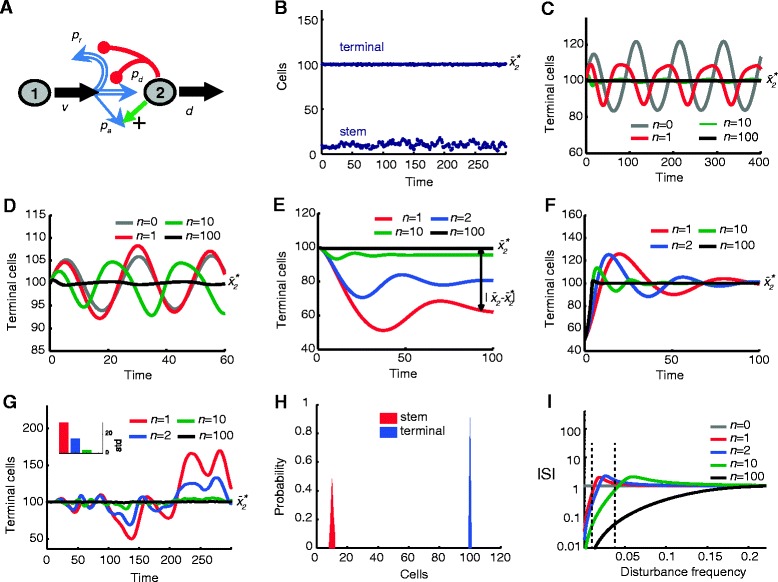Figure 4.

Effects of disturbances on the performance of fate control. In all panels, the system is at steady state at time t = 0, and larger n corresponds to stronger feedback. For parameter values used see Additional file 1: Table S1. (A) Cartoon representation of fate-controlled two-stage lineage. Stem cell progeny can remain stem cells, differentiate into terminal (type 2) cells, or differentiate into alternate terminal cells. p a is the probability of differentiation to alternate terminal cells (p a = 1 - p r - p d). Red lines represent negative feedback regulation on p r and p d, and the green arrow represents positive feedback on p a. (B) Shown is the population of terminal cells (solid line) and stem cells (dashed line) in response to stochastic fluctuations on d (n = 2). (C-D) Shown is stem cell population response to periodic oscillations of d with frequency 0.01 (panel C) and 0.04 (panel D). Feedback suppresses oscillations due to both disturbance frequencies. (E) Plotted is terminal cell population response to stem cell loss at constant rate. Stronger feedback reduces steady state error without causing oscillations. (F) Shown is the terminal cell population after abrupt removal of half the terminal cell population at t = 0. More aggressive feedback has faster rise time and less transient oscillations. (G) Main plot shows terminal cell populations response to a stochastic disturbance directly affecting the stem cell population. The inset shows the standard deviation (std) of responses for each feedback level. Aggressive feedback reduces the variance of the response. (H) Shown is the distribution of the stem and terminal cell populations for the response shown in (G) with n = 100. (I) Shown is the plot of the sensitivity function S for fate control as a function of disturbance frequency. Aggressive feedback improves performance (smaller |S|) across all frequencies. For additional types of disturbances see Additional file 1: Figure S3.
